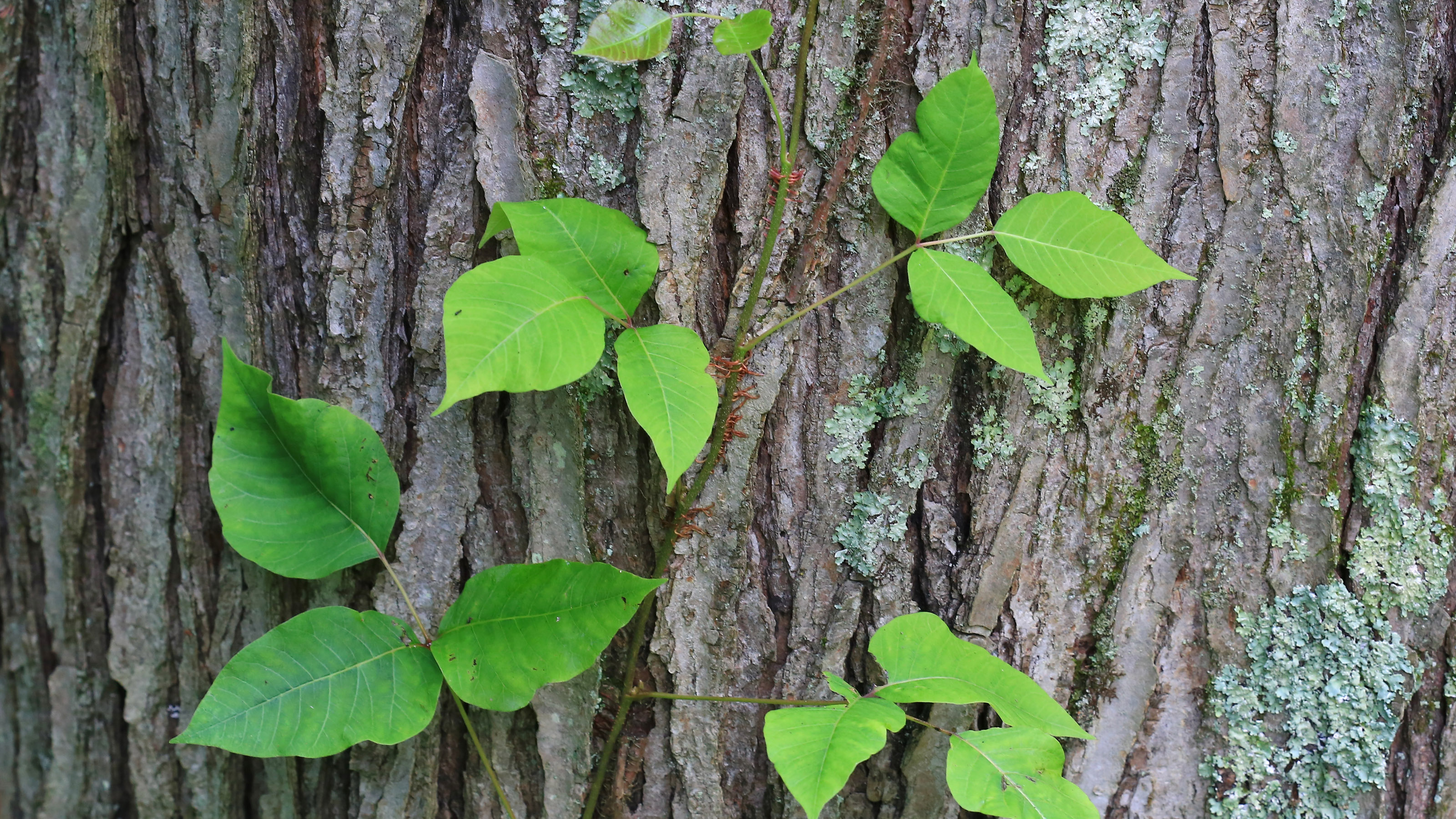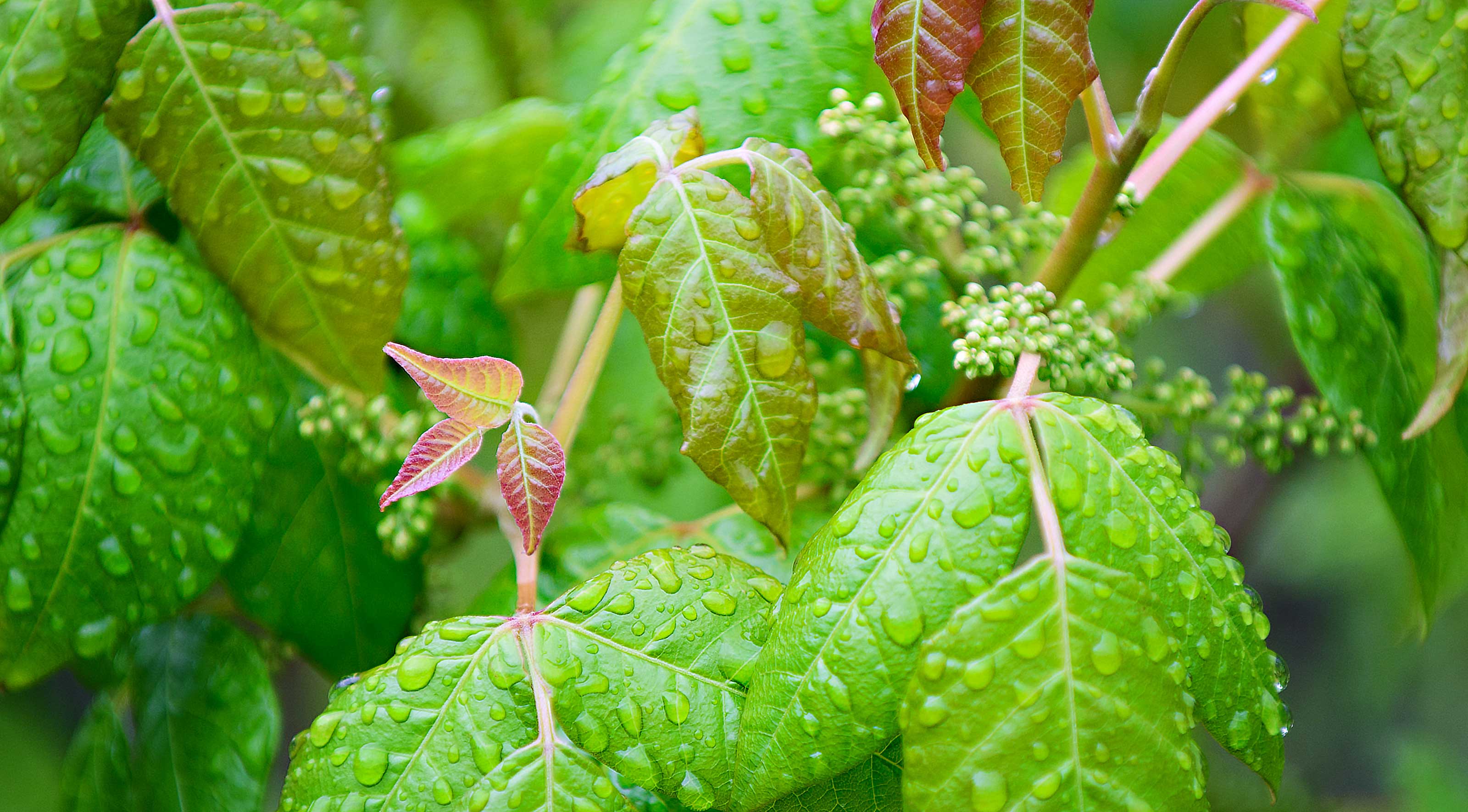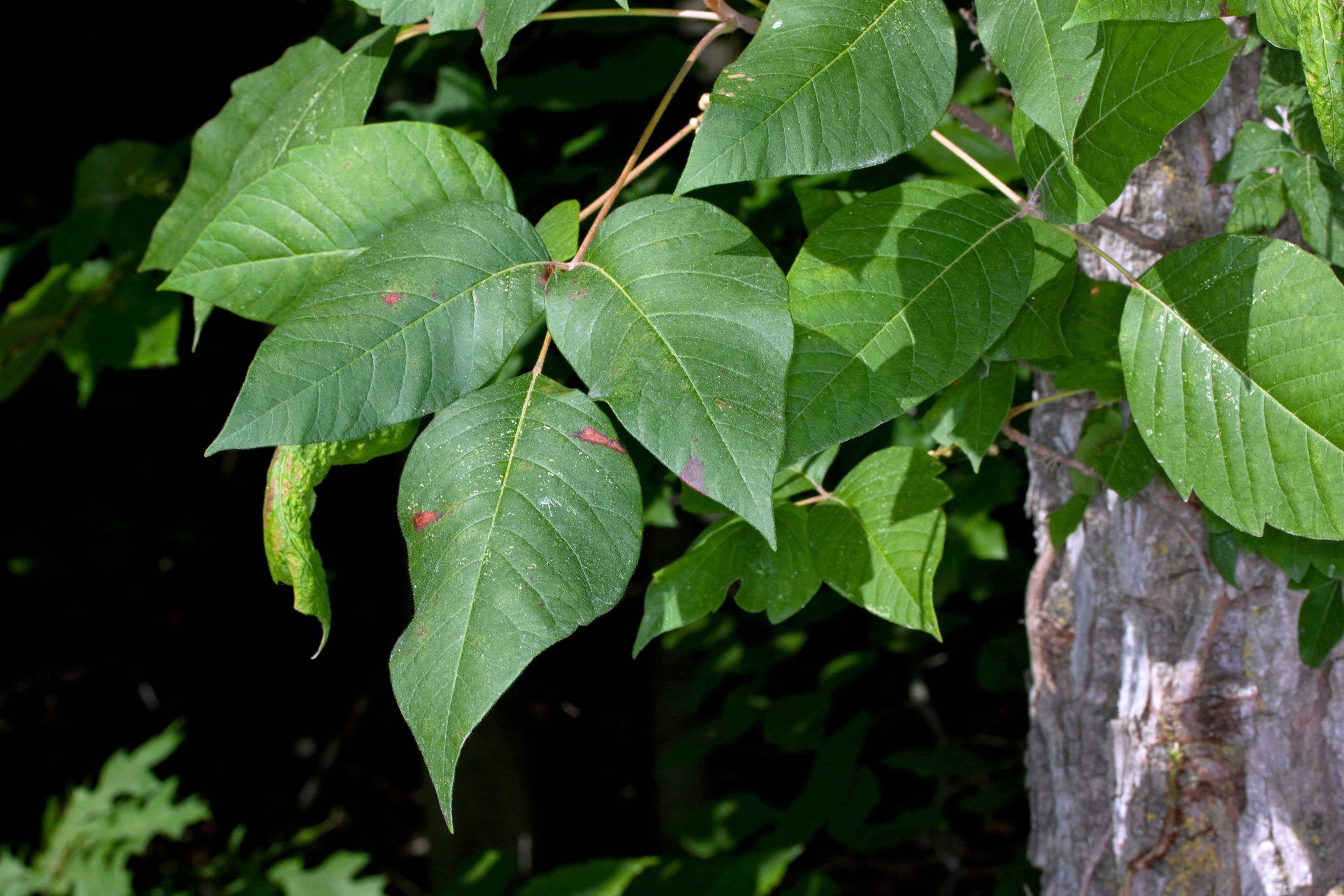How to get rid of poison ivy: remove this weed for a safer garden
Need to know how to get rid of poison ivy? Follow our advice and clear your plot of this dangerous plant


Do you want to know how to get rid of poison ivy? Officially known as Rhus radicans, this clambering vine is definitely not the kind of foliage you want growing over your garden walls and fences.
For most people, the inevitable growth of weeds is just part of owning a garden (and our weed control tips and tricks has lots of useful solutions). But many of these weeds aren't necessarily harmful. They're just unsightly, or crowd the plants that are actually meant to be there, taking up valuable nutrients. However, some weeds (poison ivy, for example) have more reason for being removed – the key one being the nasty rash that appears if they're accidentally touched.
So to keep yourself, your family, and your guests safe in your garden, learn how to get rid of poison ivy. We've got all the advice you need.
Why do you need to remove poison ivy?

Poison ivy may not look too dangerous. There's no spiky thorns, its stems can seem quite delicate, and the foliage turns a lovely reddish color in spring and autumn. However, it's incredibly toxic.
Just a gentle brush against the plant can cause a severe skin reaction for the majority of people. This is due to the oil that poison ivy produces, called urushiol. And it's not just in the leaves – the oil is present in all parts of the plant, from the stems right down to the roots. And, as Healthline says, it's tenacious. For instance, if you manage to touch the leaves with your sleeve, and then your sleeve touches your smartphone, the oil can carry across. This means, it can easily end up on your hands, or worse – your face.
But then what? Well, you might not even get a reaction for a good few days after making contact with the plant, although it can also take just a few hours. It'll start with your skin becoming incredibly itchy, and then before you know it, you'll have a big, red, blistery rash. Unfortunately, this can last for weeks. And if you've been reading up on the most poisonous plants for dogs, or plants that are poisonous to cats, then you should know that poison ivy can affect your beloved pets too. So, if you spot this plant in your garden, it's best to take action to remove it straight away.
What does poison ivy look like?

If you're now cautiously eyeing up the sprawling ivy at the bottom of your yard and wondering if you've accidentally welcomed the poisoned type into your space, then don't panic. Firstly, poison ivy actually looks quite different to the normal ivy that you'd use as a pretty trailer from hanging basket ideas, winter pots, or to soften hard landscaping.
Here are a few pointers to help identity it (but don't get too close, unless you're wearing protective clothing):
- You may have heard the old saying, 'leaves of three – let it be'. This is one of the first things to look for when identifying poison ivy – compound leaves split into three 'leaflets'. The middle 'leaflet' will be the longest and the other two will be opposite one another.
- The leaves are also pointed at the tip, and tend to be slightly glossy in texture.
- Poison ivy changes color throughout the seasons. In spring, its leaves are red, and you can often spot small white flowers. In summer, mature leaves will turn green, and berries in an off-white tone will appear. As autumn approaches, poison ivy's leaves will offer a show of flame-like hues, before turning deep red and eventually, in winter, falling off.
- There are two kinds of poison ivy – Eastern and Western, however both kinds grow all over. According to Healthline, Eastern poison ivy can be found as both a ground and climbing vine. Western poison ivy grows only as a ground vine.
- Poison ivy's leaves looks quite similar to poison oak's, which are more deeply-ridged and tend to be slightly hairy in texture. Like poison ivy, poison oak also contains the toxic oil urushiol.
How to get rid of poison ivy with weed killer

So, you've spotted some poison ivy and you're ready to eradicate it as fast as possible. One of the easiest go-to solutions is to use weed killer.
- Protect yourself with suitable clothing. This includes long sleeves, long trousers, eye goggles, thick gloves, and ideally, a mask over your nose and mouth. Tie long hair well back.
- As with all poison ivy removal techniques, make sure children and pets are kept safely indoors throughout.
- Apply your herbicide according to the instructions on the label. Make sure you've opted for one that is suitable for poison ivy and other woody plants.
- Once finished, carefully remove your protective clothing and immediately put them on a very hot wash, or dispose of them. Hose down your shoes. It's also best to shower as soon as possible.
- Re-evaluate the site regularly in case of new growth, and repeat action where necessary.
We've rounded up some of our favorite picks in our best weed killer buying guide.
How to get rid of poison ivy manually

Want to take a more natural approach? Learn how to get rid of poison ivy by pulling it up by (a very-well-gloved) hand:
- Again, make sure you are fully protected before tackling poison ivy removal (see above).
- Cut the plant right back using secateurs or your best garden shears. Then, use a sharp spade to dig down deep into the earth to get out as much root matter as possible – this will help to stop it from growing back. Avoid ripping at the vines which can disperse the oils into the air.
- Don't put the pulled-up plants on your compost heap. Instead, bag them up in sealed plastic bags and dispose with your general trash (unless there is an appropriate alternative that is local to you).
- As above, remove and wash your protective clothing, and yourself, as soon as possible to avoid spreading any traces of poison ivy oil. You also need to clean your tools thoroughly before handling them again.
- Keep an eye out for recurring growth and repeat the process where needed.
How to get rid of poison ivy by smothering it
Want to know how to get rid of poison ivy by smothering it? With no chemicals and not-too-much manual labor involved, this is a useful approach if you're after low maintenance garden ideas.
- As always when dealing with poison ivy, wear suitable protective clothing.
- Start by cutting back the plants to ground level, using your shears or secatuers.
- Then, use a heavy, weed-suppressing tarpaulin or a layer of flattened-out cardboard boxes to cover over the area. Weigh these down using bricks or pegs and leave for at least three weeks. Wash your clothing, tools, and self thoroughly, as above.
- The poison ivy plant should die during the three week period. Remember to put on your protective clothing again when it's time to remove the cover, then dig up the old plant and its roots with a spade, disposing them carefully in sealed bags.
- Again, wash everything thoroughly.
How to get rid of poison ivy with homemade weed killer

According to Healthline, you can create an effective weed killer for poison ivy with household goods. In fact, you probably have these bits and bobs already in your cupboards.
- Add a cup of coarse salt and one gallon of white vinegar into a pan.
- Heat up the liquid on a stove until the salt dissolves.
- Add eight to ten drops of washing up liquid.
- Transfer the solution to a spray bottle and cover your poison ivy plant, wearing protective clothing. Be careful not to spray other parts of your flowerbed ideas or other trees and shrubs, as it may damage them.
- Check back in a week or so to see if the plant has turned brown. If it has, then your DIY solution has been a success. Dig it up, again remembering to wear protective clothing, and dispose of it appropriately in sealed plastic bags.
- Wash everything thoroughly, including your tools.
- Review the site periodically, to check if you need to repeat the process.
Looking for more cheap garden ideas? Take a look at our feature for lots more suggestions.
Can you burn poison ivy?

You definitely shouldn't burn poison ivy. When set alight, the toxic oils in the plant can be released into the air, and if accidentally inhaled, can harm your nose and lungs, making breathing very difficult. If this is to occur, seek medical attention immediately.
Instead, follow the advice for how to get rid of poison ivy above and dispose of it safely.

The garden was always a big part of Holly's life growing up, as was the surrounding New Forest where she lived. Her appreciation for the great outdoors has only grown since then. She's been an allotment keeper, a professional gardener, and a botanical illustrator – plants are her passion.
